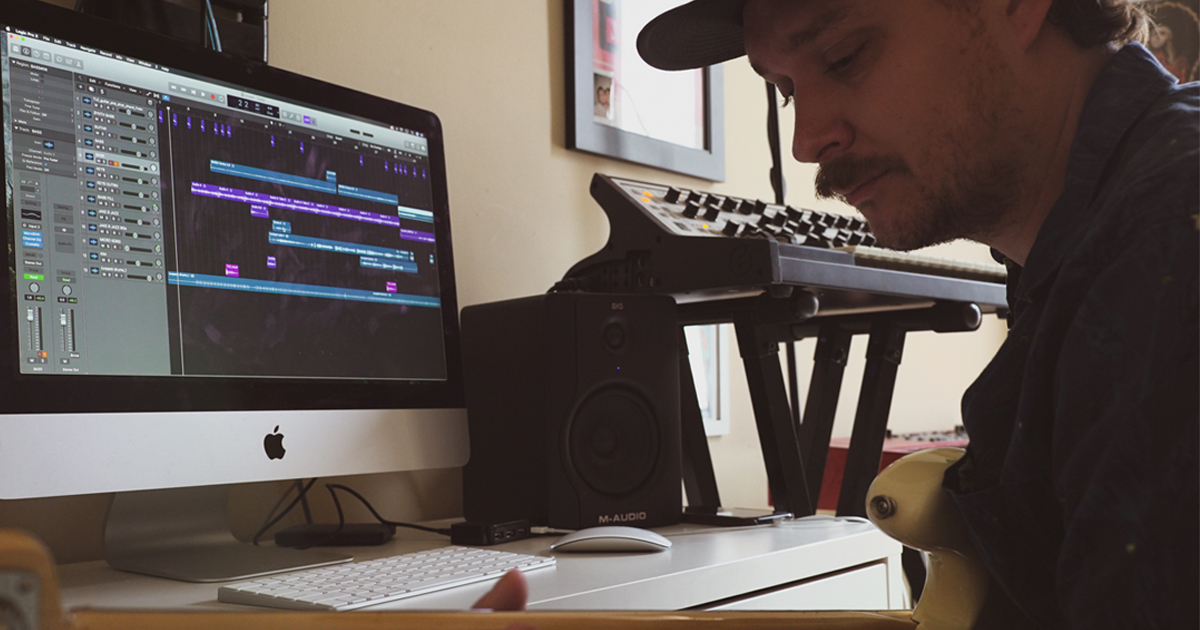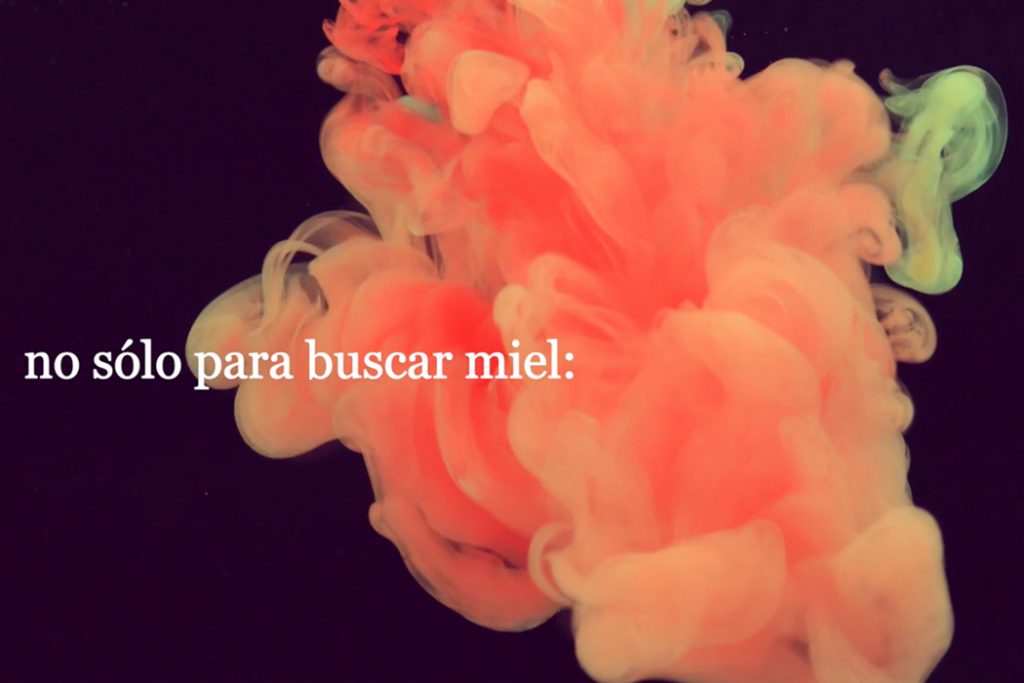+ Learn to create deep, complex chord progressions and melodies with Soundfly’s highly-acclaimed Unlocking the Emotional Power of Chords.
Composing music to set to a poem is an exciting and crafty songwriting exercise. Most people think writing song lyrics and writing poetry are similar tasks, but there are some important differences.
Song lyrics tend to look for recurring sections, patterns, and rhymes, and they demand simplicity. Poems, however, do not always have to have this structure, or even reveal their structure at all. Both can be as freeform as the writer wishes them to be, yet it’s assumed that song lyrics will be paired with music, while poetry is often written independently of accompaniment, and may include its own musicality and flow.
In this guide, I would like to reveal how I’ve composed music set to a poem in six steps, and some structures I’ve come across that can aid the process. As a case study, I will use my version of Pablo Neruda’s poem called “Con Ella” (“With Her”), taken from my EP Migrante. Here’s the song:
1. Choose your poem.
Choosing a poem for musical composition can be tricky. I personally like to choose poems that have the following attributes:
- Short stanzas
- Rhyme schemes
- Recurring sections
When a poem has short stanzas, you can write simpler, more effective melodies making use of them. Moreover, if the poem already has a rhyme scheme, it will be much easier to turn it into a song, as we can match the same melody or chord cadence to two lines that have the same rhyme.
I chose the poem “Con Ella” by Pablo Neruda because it fulfilled all of the three criteria above. “Con Ella” comprises 19 stanzas, with some rhyming, and every stanza is about four or five words long, which makes the piece very flexible to work with.
2. Find an internal rhythm and groove over it.
When we’re composing music to a poem, one of the first things to look for is an internal rhythm guiding its flow. So, read through your poem a few times (preferably aloud). As you’re reading, look for any traces of an internal rhythm. If the poem already has its own rhythm, your job will be much easier later on.
In “Con Ella,” I found internal rhythm in certain lines, such as: “Con una cesta, con tu pala, con tus zapatos y tu ropa” (“With a basket, with your shovel, with your shoes, and your clothes”). The recurring use of “with…” gave me a sense of a pattern in that line that I could use to generate a rhythmic phrase.
So, from these stanzas, I extracted a groove using a 3/4 time signature.
+ Learn production, composition, songwriting, theory, arranging, mixing, and more; whenever you want and wherever you are. Subscribe for full access!

3. Choose the chorus or refrain of the poem.
In order to build the form of the song, you should look for recurring sections within the poem. I think the easiest is to find a “hook,” “refrain,” or a chorus within the poem. Finding a recurring section will help you structure the rest of the poem around this part; but if there are none, you can choose the line(s) that most resonate with your message to use for your chorus.
“Con Ella” does not have many recurring sections, so I had to do some digging around the poem. I found out that there are two lines that are similar though. These lines were: “Como es duro este tiempo, espérame” (“This time is difficult, wait for me”) and “Como es largo este tiempo, esperame” (“This time is long, wait for me”).
Utilizing the similarity of these two verses, I was able to build a refrain which became the central. gravitational focus of my song.
4. Decide on the song form.
I can hear some of you thinking: “What in the world is a refrain?”
Knowledge of song forms is essential when you’re composing to a poem because you’ll have to adapt a literary form into a musical one. Here is a quick review of the two most common song forms used when a poem is used for song composition.
Verse – Refrain
Verse – Refrain might be the easiest song form to use when composing a poem. This song form has a series of stanzas functioning as a verse, followed by a recurring refrain. A great example would be Bob Dylan’s “The Times They Are A-Changin.”
Here are the lyrics from the stanzas.
“Come gather ’round people,
Wherever you roam,
And admit that the waters around you have grown,
And accept it that soon,
You’ll be drenched to the bone,
If your time to you is worth savin’,
Then you better start swimmin’ or you’ll sink like a stone,
For the times they are a-changin’.”
Then a new verse will start, and it will end with the recurring refrain, which is the line: “For the times they are a-changin’.” Here the refrain takes the place of a chorus, due to its repetitiveness but it isn’t its own section, like a chorus would be.
With “Con Ella,” I also chose the Verse – Refrain song form. My refrain ended up being the recurring line: “Como es duro este tiempo, espérame” (“This time is difficult, wait for me”).
Verse – Pre-Chorus – Chorus
It can be argued that the Verse – Pre-Chorus – Chorus song form has been the most popular form for the past few decades. In fact, a lot of the top 40 songs that we hear today are still based on this form. The verse introduces the story, the pre-chorus develops it, and the chorus takes us to the catchy hook; the singalong section that we all remember.
In the context of a poem, the Verse – Pre-Chorus – Chorus format might be tough to pull off though, because you would have to find a poem that develops a story line with a recurring, catchy chorus — or reword the poem to make it work (which is dangerous).
+ Read more on Flypaper: Learn how Soundfly student Eva Grill composed a piece of music to a poem by Robert Burns here!
5. Use phrasing to tie important rhythms together with important words.
Phrasing is the art of matching dominant words to dominant beats in the rhythm.
Important elements of rhythm, in the context of a 4/4 time signature, tend to be organized heavily around the upbeats of 1 and 3; while less important rhythmic elements usually occur on the downbeats of 2 and 4. The words that fall on beats 1 and 3 tend to be perceived as more important than the ones on beats 2 and 4.
A famous example is “Every Breath You Take” by The Police, where in the recurring line “every breath you take,” the words “breath” and “take” fall on beat 3 and 1, respectively. We have the words “every” and ”you” falling on beats 2 and 4. So, as listeners, our focus is subconsciously on the words “breath” and “take,” because they fall on the dominant beats of 1 and 3.
In the context of a 3/4 time signature, the strongest beat would be the upbeat of 1. In “Con Ella,” I matched the important words I wanted to stress over beat one for this reason, and it felt respectful of Neruda’s use of the word “with” at the start of a lot of his lines.
6. Create the melody and harmony (in no particular order).
Once you choose your song form, your time signature, and phrasing, grab your instrument, write some melodies, and add some harmonies! You can start with a melody and add chords on top of it, or vice versa. It’s really your choice in the end.
For “Con Ella,” I grabbed my guitar and came up with a chord progression that I thought worked well with the phrasing. Then, I extracted the melody from the chord progression and the song came to its final form.
These six steps outline the general process of composing a song based on a poem. Note that I wrote this guide assuming that you’re composing to someone else’s poem. I would discourage you from changing the order of words within a stanza or the words themselves if it’s someone else’s work.
Staying faithful to the original text will help you to get your composition approved by the original author in the end!
Don’t stop here!
Continue learning with hundreds of lessons on songwriting, mixing, recording and production, composing, beat making, and more on Soundfly, with artist-led courses by Ryan Lott, Com Truise, Jlin, Kiefer, RJD2, and Kimbra: Vocal Creativity, Arranging, & Production.




